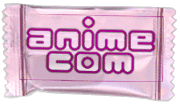|
Yumi
Japanese Crafts Book Review
Yumi is another of Annelore Parot's delightful and cute Koekeshi books that makes for an awesome gift for a young girl who would learn things. Join Yumi who is a kokeshi character bringing the reader along on her normal day as she explores the Tokyo with her friends.
One of the best pages in this book details how Yumi shops for outfits to cosplay in. In Japan cosplaying is a hobby where there are shops for, so it is not an unfamiliar sight to see friends going out shopping for cosplay outfits, and then getting into photography shoots at specific locations. It is not normal though for people to wear cosplay on a whim as a regular outfit though.
 It is surprising to realize that the author of the Koekshi series to not be Japanese, but French, and that the series was originally published in French and then translated to English. There is actually a website that deals with introducing Parotës Koekshi world, but the entire page is in French: http://kokeshi-leclub.com/kokeshi/. It is surprising to realize that the author of the Koekshi series to not be Japanese, but French, and that the series was originally published in French and then translated to English. There is actually a website that deals with introducing Parotës Koekshi world, but the entire page is in French: http://kokeshi-leclub.com/kokeshi/.
The American publisher went ahead and released a website that has nearly the same content without requiring people to register for its extra goodies here — http://www.chroniclebooks.com/landing-pages/kokeshi/. It definitely doesn't make this series any less kawaii though. There is three books of this particular Koekshi series that is available in English, along with journals and notecards.
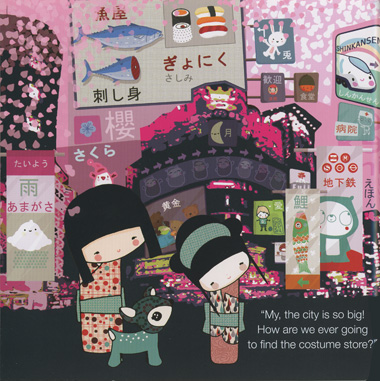
Reviewed by Linda Yau, November 2012
Aoki
Japanese Crafts Book Review
Traveling and spending time with friends is important as a social activity. Aoki is a Kokeshi doll character that travels to visit her friend Yoko, another Kokeshi doll. With imagination to choose as the story dictates, pretty pictures, and flaps to open, this is French author Annelore Parot's presentation of Japan.
Aoki as a Kokeshi character in other books gets lost in the crowd of similarities, but her adventures in this book makes for a touching experience for readers, which in this case will appeal to a little girl. 'Touching' has a double meaning here; from the rich textures of the paper to the various panels or flaps that can be moved. This is not a pop up book, but the rich illustrations and the thoughtful questions asked, can be an "oooh and ahhh" storytelling moment.
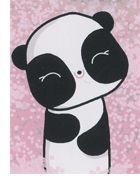 The cover of this book may appear to be an iron on accessory for a bag, but if removed from the cover, the book loses its wonderful texture cover. As a reader though, and if you happen to read French, you can look for more activities here: or download a wallpaper. The cover of this book may appear to be an iron on accessory for a bag, but if removed from the cover, the book loses its wonderful texture cover. As a reader though, and if you happen to read French, you can look for more activities here: or download a wallpaper.
This is a website that definitely needs to be joined as a member to access the goodies, but with the internet and translation tools, it makes the foreign language an accessible one.

Reviewed by Linda Yau, October 2012
The Cuter Book
Japanese Craft Book Review
In Japan, kawaii or chiisai (small) items sell, it definitely is not an unfamiliar phrase to hear girls exclaiming to their friends, "Kawaii deshou?" asking their friends for approval in looking at a cute item they have acquired. "How to do" crafts books assist with helping hobbyists, creative people, or just people who want to create crafts that inspire a similar feeling of love as accessories to own, objects to play with, or gifts to be given/exchanged.
This is not the first time that Anime.com has focused on Arazi Aronzo books, since we have a couple of reviews on this duo's previous publications, who have successfully sold and marketed their children and other craft books for a Japanese audience. Consider The Cuter Book as a follow up edition to The Cute Book.
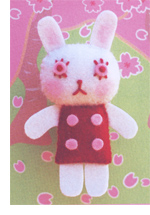 The Cuter Book has 28 projects where either young or old crafters can spend time making, with relatively inexpensive materials, then sell for perhaps more on Etsy.com. There are directions that can be easily followed, with variations that can make objects owned by anyone much cuter, and fun to look at. It doesn't take as much imagination needed to complete projects, but with a desire to make cute items, this is a good craft book to be amused with and completed over a short period of time. The Cuter Book has 28 projects where either young or old crafters can spend time making, with relatively inexpensive materials, then sell for perhaps more on Etsy.com. There are directions that can be easily followed, with variations that can make objects owned by anyone much cuter, and fun to look at. It doesn't take as much imagination needed to complete projects, but with a desire to make cute items, this is a good craft book to be amused with and completed over a short period of time.
Reviewed by Linda Yau, August 2012
Cute Pups: Canine Friends and Accessories
Japanese Crafts Book Review
Dogs are often considered man's best friend, but for people who are allergic or can't own a lovable furry companion, they need to either make do without or go with a purchased stuffed toy. Ultimately though, how about creating your own pup craft?
Cute Pups is a crafting book meant for advanced craftistas on how to make hand sewn dogs that you can later model or show off. The book is separated into roughly three themed sections, first and foremost are finished product photos of the cute pups. The second part is crafting lifestyle accessories such as a collar, bowl, or bone that you want to model with your pups. Lastly the third section is the meat and gravy on crafting twelve different pup species. Interspersed within these pages are tips and techniques on perfecting your pups.
To continue on "oohing" and "ahhing" over the cuteness of these tiny dogs, consider checking out Chie Hayano's other book of Cute Dogs: Craft Your Own Pooches. With the internet and your local crafts stores, taking initial steps to gather supplies on creating your own Chihuahua, Shiba Inu or Maltese is not beyond anyone else's imagination. The finished product is an adorable treat for animal lovers.
Reviewed by Linda Yau, December 2011
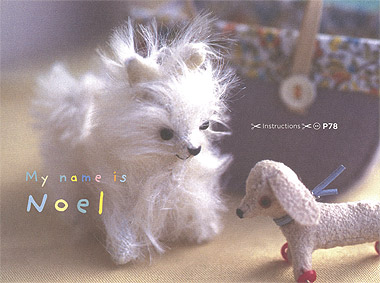
Bandai Box Art:
Shigeru Komatsuzaki
Japanese Toy Book Review
No matter where they come from, young boys the world over can probably attest to a singular experience when it comes to Japanese model kits: staring at a lurid painting on the box and having all sorts of synapses go ZIP-ZAP-ZANG in your head. (And even, in extreme cases, ZOWIE.) Right there in front of you is a snapshot of how cool the thing inside the box would be if it wasn't made of ultra-cheap dayglo plastic. And that moment right there is what pushes you past the ground-level mediocrity of whatever you could cobble together from the pieces. It's all about imagination, ignited by the alchemy of perfect box art.
(I am, of course, talking about vintage kits rather than the works of obsessive engineering we see today with the overachieving CG images on the box; that's a different animal entirely.)
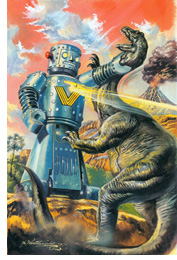 So what if you could remove the cruddy model itself from the equation and just bask in the all-powerful images? That's exactly what you get from this new book that collects the amazing work of Japanese giant Shigeru Komatsuzaki between two covers. For roughly ten years (1968-77) he was Bandai's go-to guy for box art paintings, one of the few human beings in the world who knew precisely what image would spark the imaginations of model-building boys everywhere and keep them in high spirits no matter what the finished product looked like. So what if you could remove the cruddy model itself from the equation and just bask in the all-powerful images? That's exactly what you get from this new book that collects the amazing work of Japanese giant Shigeru Komatsuzaki between two covers. For roughly ten years (1968-77) he was Bandai's go-to guy for box art paintings, one of the few human beings in the world who knew precisely what image would spark the imaginations of model-building boys everywhere and keep them in high spirits no matter what the finished product looked like.
From his larger-than-life paintings of Gerry Anderson's Thunderbirds to Kamen Rider to the first Super Robots to everyday airplanes, Komatsuzaki demonstrates like few others that modeling is no more about making models than fishing is about eating the fish. With seemingly no effort whatsoever, he proves that the right pose it all it takes to turn a clunky block of plastic into a god.
I discovered this tome completely by accident at a bookstore in Japan a couple weeks before it was released; a new magazine called "Character Age" caught my eye, and when I flipped it over there was an ad for the book on the back. I zeroed right in on the Cosmo Zero painting - it turned out Komatsuzaki was also Bandai's artist for the first wave of Space Battleship Yamato model kits, and that made it an instant sell for me.
Until very recently, it was only available via mail order in Japan, but it has recently been stocked at CDJapan, and some of his other books can be found at Hobbylink.
So don't wait another minute - your synapses can always use a little more ZIP-ZAP-ZANG!
Reviewed by Tim Eldred, May 2009
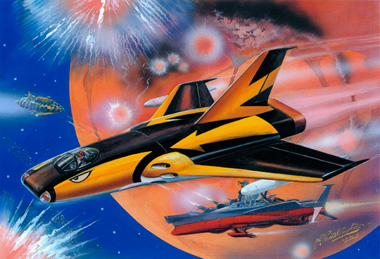
|
|
|
 |
|
The Cute Book
Japanese Crafts Book Review
Are you one of those handy people? Whatever your hands make, it always comes out beautifully perfect? Then you suck and should stop reading this review because this book is not for perfect people like you.
This book is for people like me, who can't boil water without burning it. (Yes, it is possible.) I've tried knitting and my scarves always end up lopsided. (Yep, lopsided is do-able on a scarf somehow.) I've tried cross-stitching and, I don't know how, my Garfield ended up with three eyes. I've tried drawing/sketching and my teachers have given up on even getting s straight line out of me. (Don't ask.) Suffice it to say: my hands don't listen very well to what I would like it to do.
 This book makes it easy for me NOT to screw up any step on making any of these cute little felt buddies. Think about it: These little felt buddies that would otherwise cost you $10+ to get because they were imported can easily be made if you have this book whether you are a handy person or not. Not only do they have a small standard set of supplies that you use time after time but they also don't talk in any funny code words to piece everything together. For people who've tried knitting, you know what Iím talking about: the k1, p1, c6f, or k2tog. Donít know how big the eyes or ears or feet or arms need to be? Don't worry about it; the book gives you a template that you can use to cut the felt to size with. No more worrying about lopsided animals that only have one arm and one leg that look right. This book makes it easy for me NOT to screw up any step on making any of these cute little felt buddies. Think about it: These little felt buddies that would otherwise cost you $10+ to get because they were imported can easily be made if you have this book whether you are a handy person or not. Not only do they have a small standard set of supplies that you use time after time but they also don't talk in any funny code words to piece everything together. For people who've tried knitting, you know what Iím talking about: the k1, p1, c6f, or k2tog. Donít know how big the eyes or ears or feet or arms need to be? Don't worry about it; the book gives you a template that you can use to cut the felt to size with. No more worrying about lopsided animals that only have one arm and one leg that look right.
Another thing that I really hated about other craft books was that they tend to skip a step or two thinking that you can read minds and figure out what you need to do. This is one of the major sections where the extra eyes and noses and stuff come from. Rest assured, there are no missing steps to any of the instructions in this book. Even when they are repeating themselves, the steps are presented again and we don't have to refer to any previous instructions. So if you want to skip the first two felt buddies, you can easily go to felt buddy number 3 without having to flip pages back and forth to figure out what you need to do.
One other great thing about this book: even if you don't end up exactly looking like the one in the book, any little quirk and anything that is slightly off is only going to make your felt buddy look cuter. I made a felt bunny and the head is tilted, it looks like it's a little confused. Its legs are a little close together so it looks like it needs to go to the bathroom, too. I think I'm on the road to getting my hands to listen to what I would like them to do.
Reviewed by Carolyn Whu, November 2007
Aranzi Machine Gun
Japanese Crafts Mook Review
In Japan there is the great tradition of the mook, which is a combination of a magazine and a book. And if you're into Japanese crafting (with a an extra helping of cute) this is the mook that you'll want to own. Unlike other "how to books" the Aranzi Machine Gun series is amazing because most it places Etsyesque felt charcters into a clever manga format. The result is that these cute creations come to life as characters which makes for entertaining reading even if you have no intention of stitching together these little wonders.
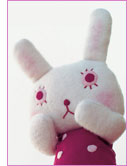 What's also nice about this series is that the design of the publication is an eclectic mix as some pages have a hand hand drawn cartoony quality while other pages are photographed dioramas. One is also impressed with the high quality found in each and every page, you get the feeling that the artists behind the mook are doing it as a real labor of love. In fact what makes Aranzi Machine Gun so special is that it never becomes too slick, instead it has a fanzine like quality to it which is quite charming and wonderful. What's also nice about this series is that the design of the publication is an eclectic mix as some pages have a hand hand drawn cartoony quality while other pages are photographed dioramas. One is also impressed with the high quality found in each and every page, you get the feeling that the artists behind the mook are doing it as a real labor of love. In fact what makes Aranzi Machine Gun so special is that it never becomes too slick, instead it has a fanzine like quality to it which is quite charming and wonderful.
Reviewed by Michael Pinto, November 2008
Toys: New Designs from the Art Toy Revolution
Urban Toys Book Review
When I was a kid, I didn't like the Cabbage Patch Kids or any toys that open and close their eyes by themselves because they reminded me too much of Chucky, nor did I like Barbie because she seemed so stuck up and pretentious and perfect. I gave them to my brother to decimate. I loved G.I. Joe and my Hot Wheels. I also loved my stuffed animals, My Little Pony, Carebears, Smurfs, and Monchichis. These were the toys that I kept from my childhood that would have my friends and probably family, too, laughing for days if they knew I still had them.
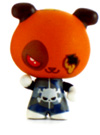 When you are older than 15, you cant have toys that make you look immature anymore, right? Besides, you should put those toys away to make room for the new toys that are coming out these days that make G.I. Joe look like a wuss and can probably kick your Monchichis ass. When you are older than 15, you cant have toys that make you look immature anymore, right? Besides, you should put those toys away to make room for the new toys that are coming out these days that make G.I. Joe look like a wuss and can probably kick your Monchichis ass.
There's this small little shop on Prince St. in New York City that I used to walk pass. I never paid any mind to it until one day they had a gigantic vinyl bunny smoking a cigarette on display. Right underneath it had a sign that said (not in these exact words of course), "Dont smoke; those cigarettes are for me." That was a 10 foot neon sign screaming welcome to the world of art toys to me. These toys are made with adults in mind; they have an edge, that have something to say whether you like it or not, that have something that they want to represent because Toys 'R Us wont carry something like them. They are not squeaky clean and they are definitely flawed like the real world that we adults work and live in now.
 Dont know where to begin? You need to get the book, Toys: New Designs from the Art Toy Revolution. If you dont live in any place that has art toy boutiques like NYC, this book is your next best bet. Even if you do live in a place that has art toy boutiques, you should get this book. Not only does it give you a short history of how these art toys came about but it also gives you interviews with the various pioneers of the art toy world. Once you are done with the words and paragraphs of it, you can sit back and enjoy the images of the toys themselves. Dont know where to begin? You need to get the book, Toys: New Designs from the Art Toy Revolution. If you dont live in any place that has art toy boutiques like NYC, this book is your next best bet. Even if you do live in a place that has art toy boutiques, you should get this book. Not only does it give you a short history of how these art toys came about but it also gives you interviews with the various pioneers of the art toy world. Once you are done with the words and paragraphs of it, you can sit back and enjoy the images of the toys themselves.
It turns out that vinyl bunny smoking a cigarette can be opened up to show a skeleton on the inside. There is also a very cute squirrel playing with his nut. Its an acorn nut; get your mind out of the gutter. Then you have the ghetto fab gorillas and the machete wielding beaver. Theres also the bunnies with Mao Tse Dong face on them and astronaut Jesus. Did I mention the smoking Fu Manchu mouse? The homicidal bears? Or the Amazonian Fraggle looking action figures? Or the evil mummy rabbits? How about the nuclear holocaust girls in maid costumes? So many toys so little time!
Reviewed by Carolyn Whu, December 2007
Anime Figures: Tokyo's Hottest 50 Anime Figurines
Anime Book Review by Brian Cirulnick
Collecting those PVC figurines can become a mighty expensive hobby. Fanboys often seem to spend their lunch money (for the next 3 years) to obtain some lump of plastic curiously shaped like a half-naked anime girl to adorn their bookshelves.
 Oozing sex-appeal and often looking like they are ready to make your wildest fantasies come true, these tiny figures are in short supply and are growing more valuable than a barrel of oil (which is ironic since plastic is made from oil). Oozing sex-appeal and often looking like they are ready to make your wildest fantasies come true, these tiny figures are in short supply and are growing more valuable than a barrel of oil (which is ironic since plastic is made from oil).
Fortunately; this book may help solve some of that longing for your favorite Lum statuette. Full of lovingly photographed and highly detailed figures, there's 50 figurines here for you to oogle, slather and feel hentai about.
This book isn't for the kiddies, as some of these sculptures are a little too revealing and far too anatomically correct.
Reviewed by Brian Cirulnick, August 2008
Tamagotchi Connection
Anime Toy Review
A Tama-whats-It? Tamagotchi is a virtual pet that you care for, feed, provide with love and attention and play with. It's an on-going game for kids that teaches them to be responsible pet owners (your virtual pet can and will DIE if you don't take care of it).
About 10 years ago these things were really hot toys for kids. And now they are really hot toys for kids again, but this time, they wirelessly communicate (via infrared) so you can create a friend list, exchange presents, and even marry your virtual pets to each other. Among other upgrades over the older versions are larger screen, better graphics and more advanced software that allows your pet to "grow" into something special, based on how well you care for it.
The little egg-shaped device with an LCD screen and just three buttons seems simple enough, but a wall of complexity that stymies parents and keeps kids occupied for hours lies underneath all that cuteness.
Considering the popularity of pokemon and the like, this is kinda' like having your very own virtual pikachu, because, with secret codes and unlockable surprises, your tamagotchi pet can be taught to perform tricks!
If the kids won't leave the games in your cell-phone alone, this is the perfect solution to give them something to do on long trips or while NOT watching tv. It's the gift that keeps on giving, and you don't even have to buy any pet-food.
Reviewed by Brian Cirulnick, October 2006
|
|
|
